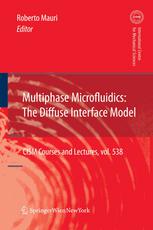

Most ebook files are in PDF format, so you can easily read them using various software such as Foxit Reader or directly on the Google Chrome browser.
Some ebook files are released by publishers in other formats such as .awz, .mobi, .epub, .fb2, etc. You may need to install specific software to read these formats on mobile/PC, such as Calibre.
Please read the tutorial at this link: https://ebookbell.com/faq
We offer FREE conversion to the popular formats you request; however, this may take some time. Therefore, right after payment, please email us, and we will try to provide the service as quickly as possible.
For some exceptional file formats or broken links (if any), please refrain from opening any disputes. Instead, email us first, and we will try to assist within a maximum of 6 hours.
EbookBell Team

5.0
78 reviewsDiffuse interface (D.I.) model for muliphase flows.- Phase separation of viscous ternary liquid mixtures.- Dewetting and decomposing films of simple and complex liquids.- Phase-field models.
Multiphase flows are typically described assuming that the different phases are separated by a sharp interface, with appropriate boundary conditions. This approach breaks down whenever the lengthscale of the phenomenon that is being studied is comparable with the real interface thickness, as it happens, for example, in the coalescence and breakup of bubbles and drops, the wetting and dewetting of solid surfaces and, in general, im micro-devices. The diffuse interface model resolves these problems by assuming that all quantities can vary continuously, so that interfaces have a non-zero thickness, i.e. they are "diffuse". The contributions in this book review the theory and describe some relevant applications of the diffuse interface model for one-component, two-phase fluids and for liquid binary mixtures, to model multiphase flows in confined geometries.